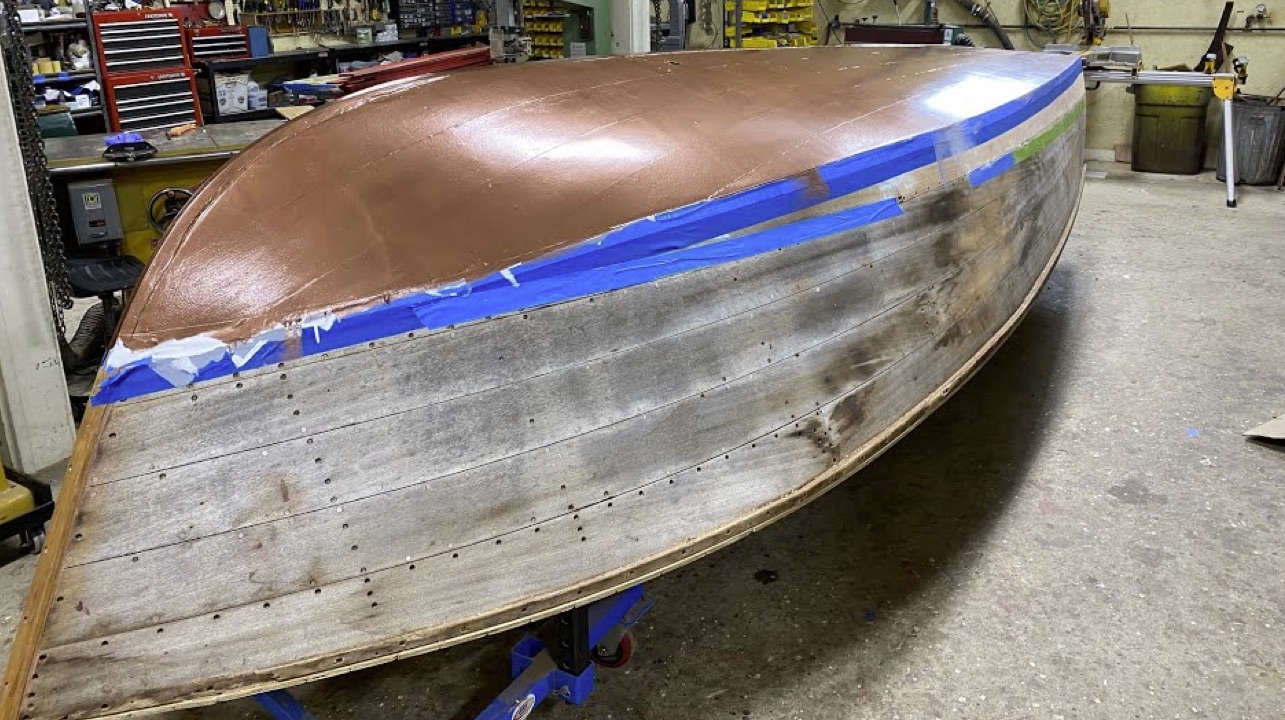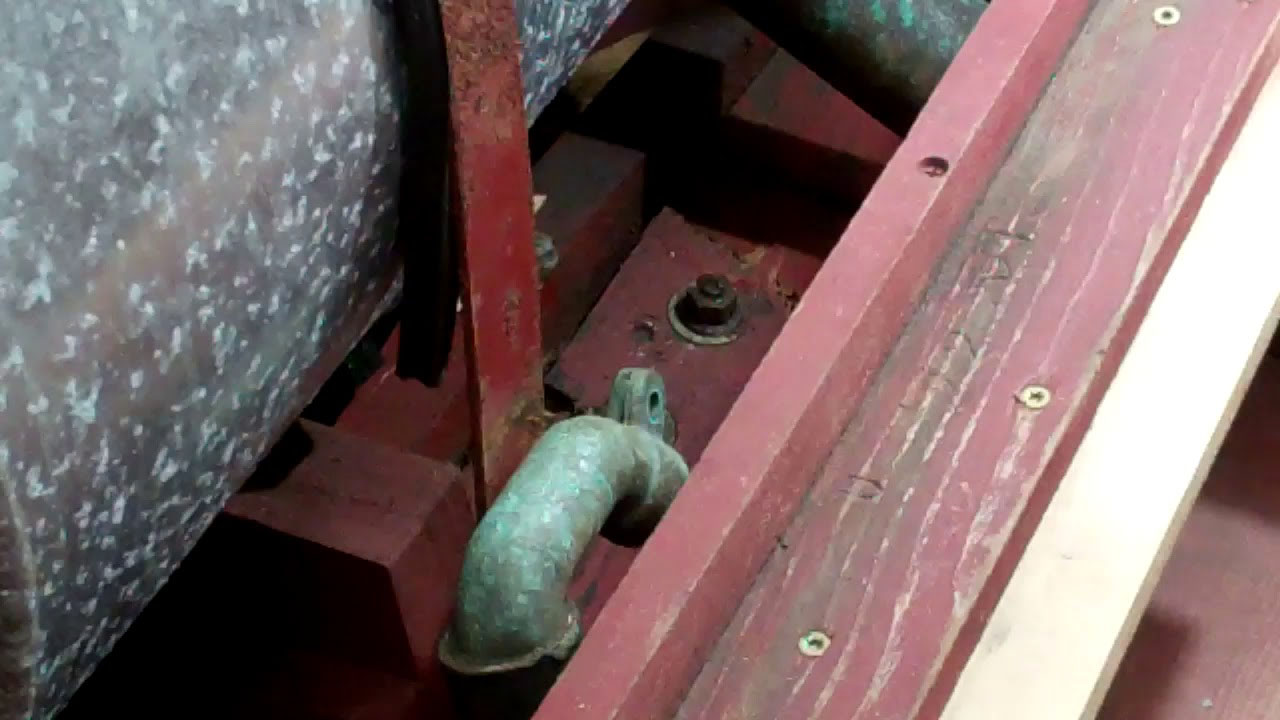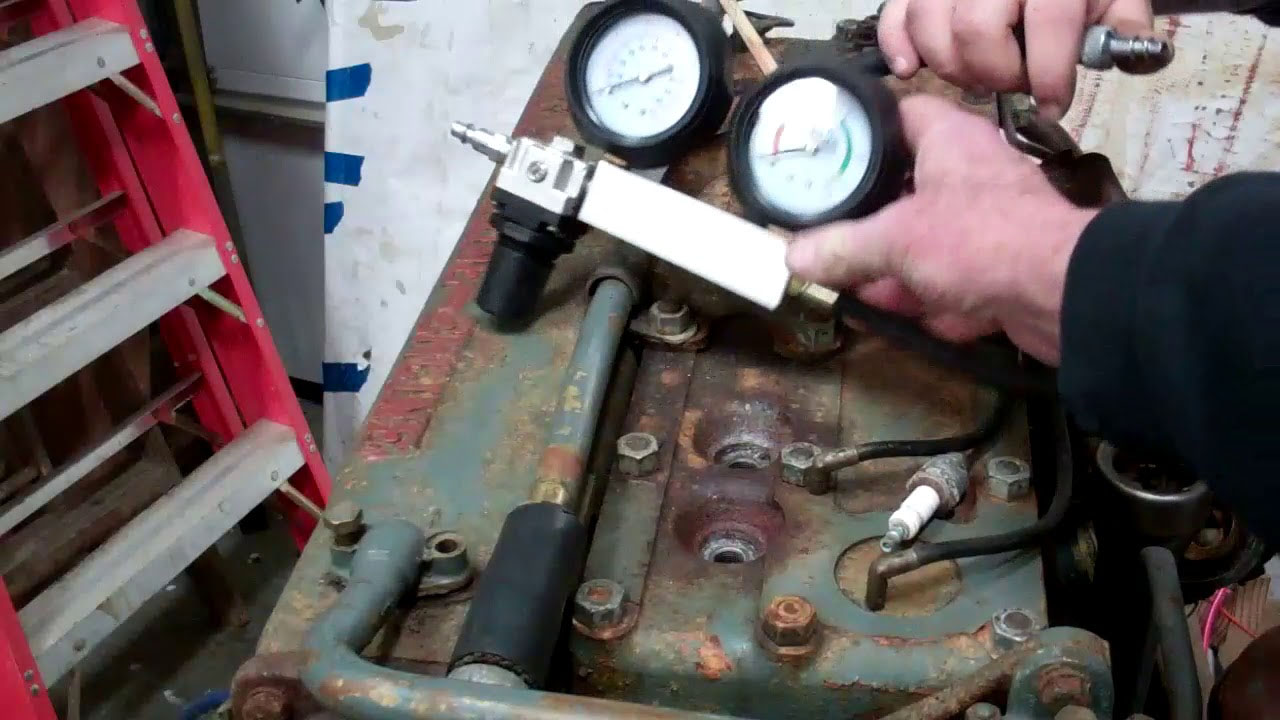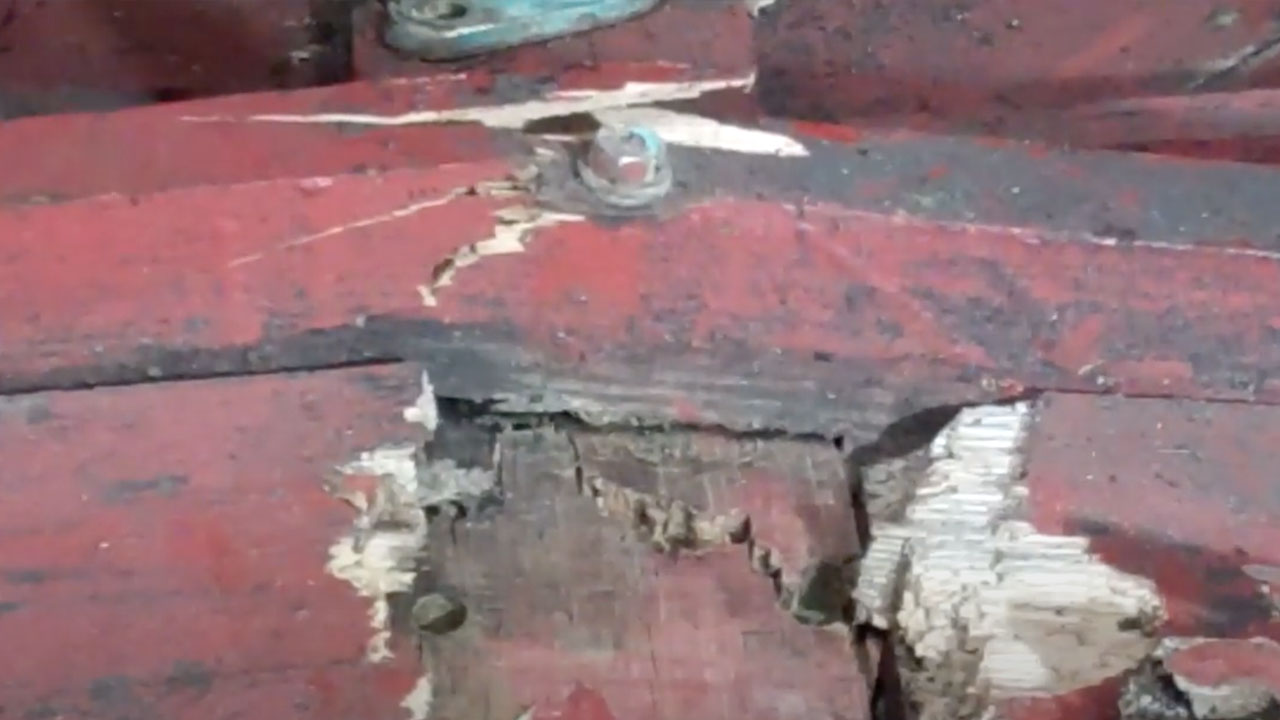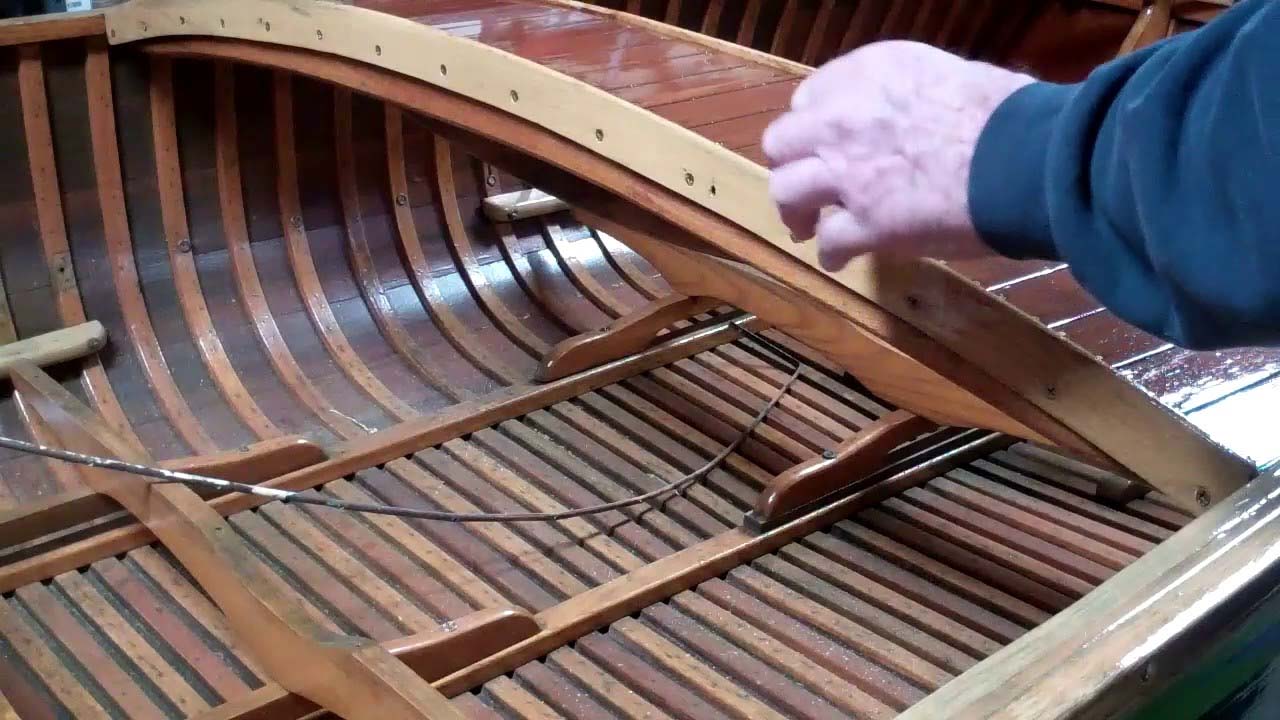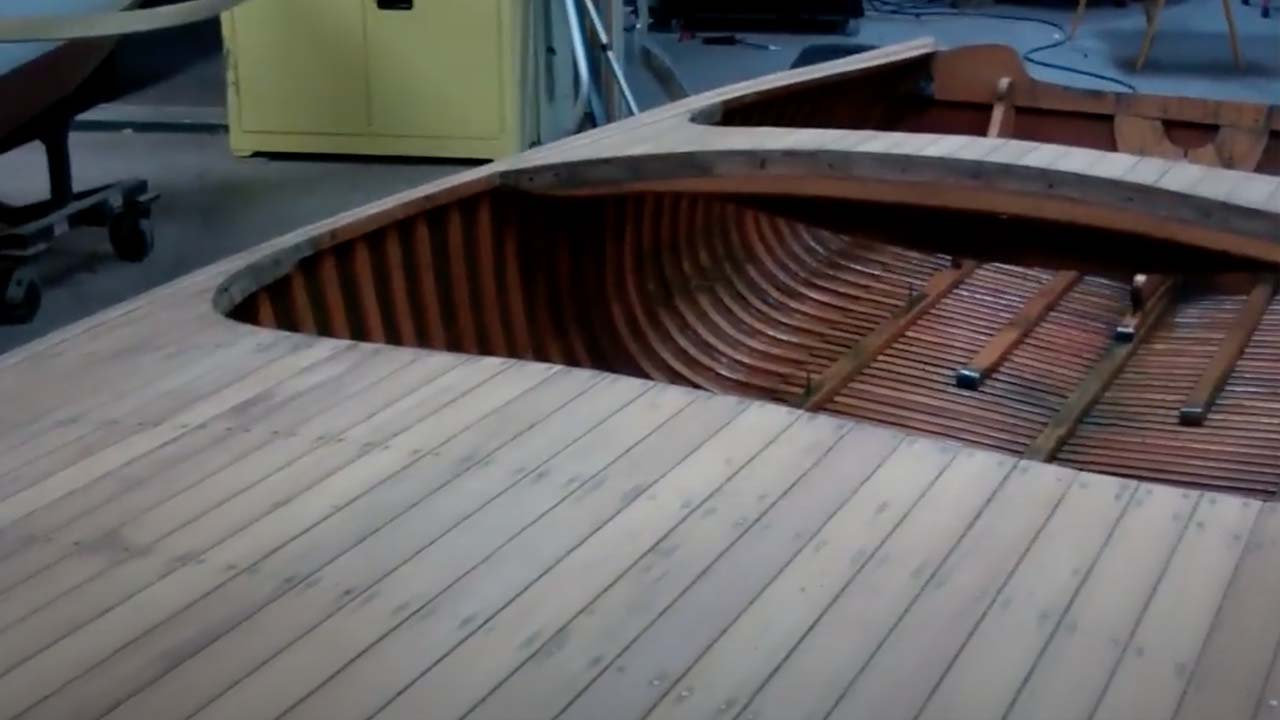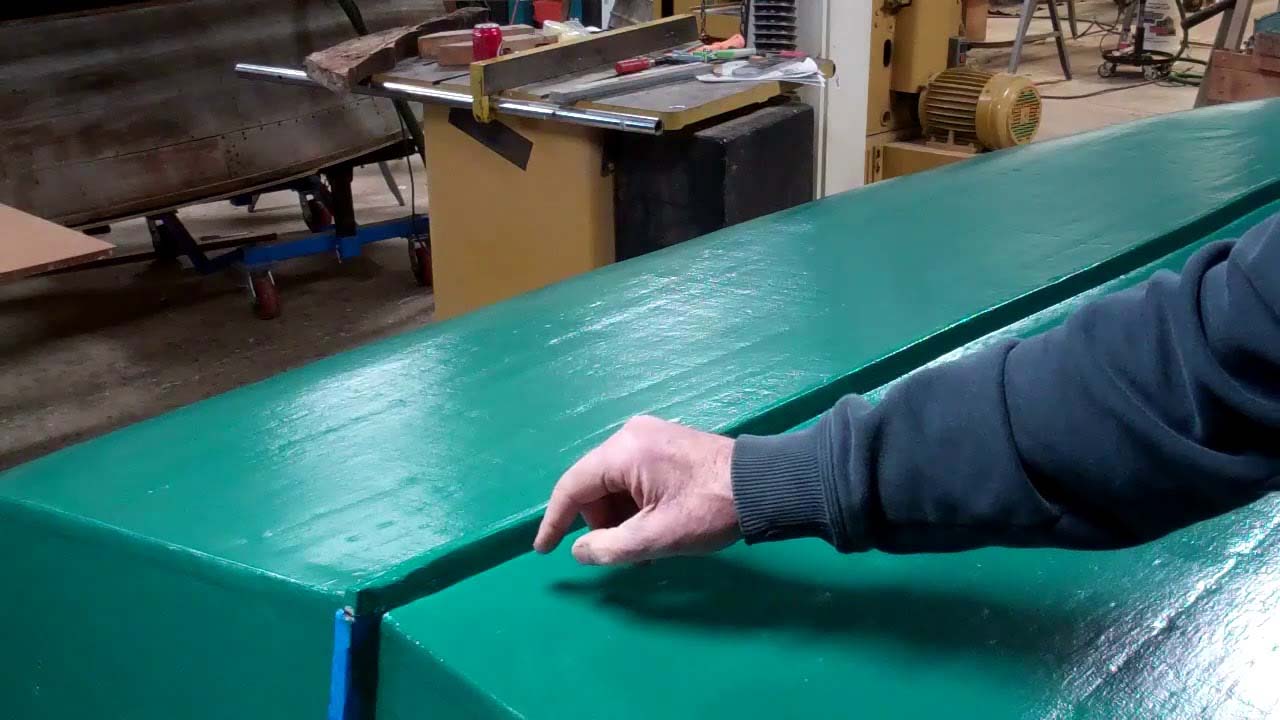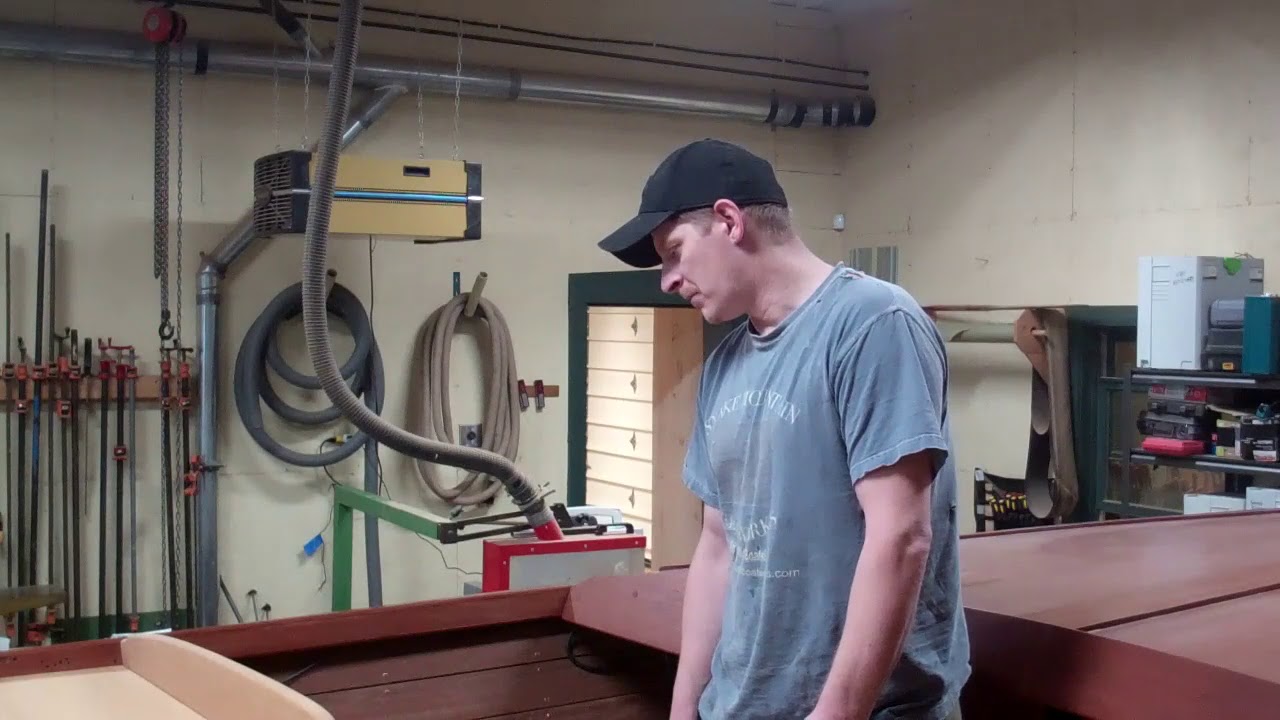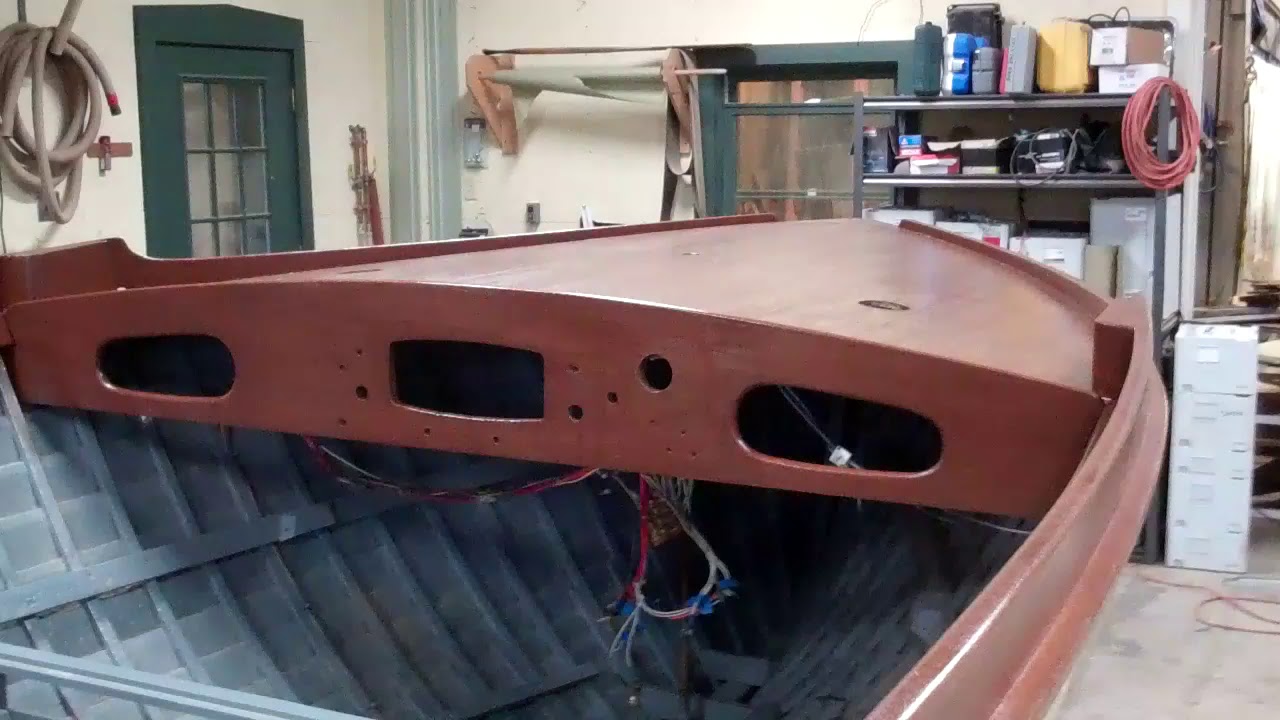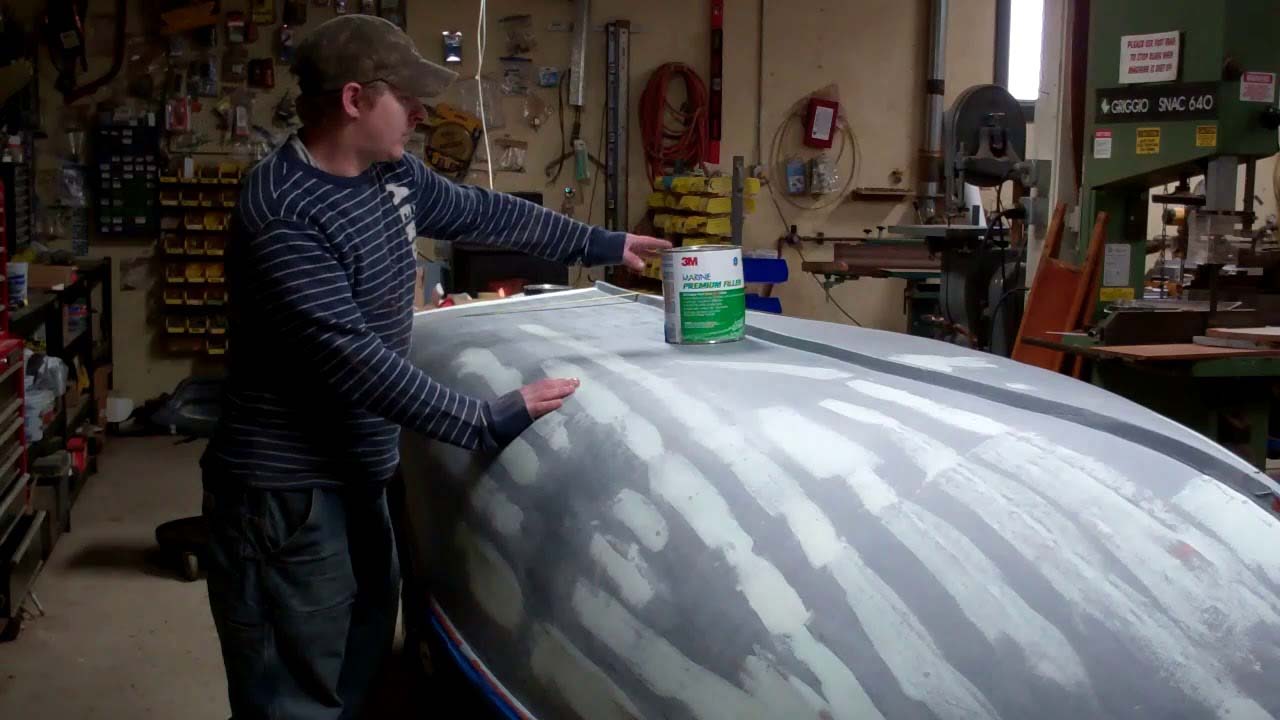We are just two coats of Pettit Old Salem Copper Bronze Hard Racing Enamel away from completing installing a True 5200 Bottom on this 1956 17’ Chris-Craft Special Sportsman.
While the Interlux Interprotect 2000E Barrier Coat Epoxy Primer cures for re-coating in five hours, the Pettit bottom paint wants sixteen hours at seventy degrees Fahrenheit. Since our shop stays in the mid-sixties, we will wait twenty to twenty-fours, or until midday tomorrow, to apply the second coat.
Her bottom will receive a third coat, but not until the balance of this preservation project is behind us. All of her topside and transom planks must be released. We do no know until then how many, if any, can be saved, and re-stacking of the topside planks is an absolute must, as is replacing at least one transom plank.
That said, on next Wednesday we will flip and load her onto her trailer, and place her in our storage facility until we and her owner agree on the path forward. His history with her – she was bought new by his family. He grew up with her as the core of family activities each year. She was sold and then banished to lying beneath a tree with a deteriorating canvas tarp as her only protection from the elements for forty years until he finally found her three or so years ago.
Those strong family and emotional ties are driving him towards investing himself in the balance of her preservation. We understand and anticipate a warm and compassionate conversation with him in the coming months.
But the best news is that, with her True 5200 Bottom in place and all structural elements now sound, we saved her. Mission accomplished!
Here are links to all the videos we shot to date:
- 1956 Chris Craft 17′ Sportsman Flip & True 5200 Bottom Begins 10 21 2019 https://youtu.be/8Sb7G0oErok
- 956 Chris Craft 17′ Sportsman Bottom Deconstruction Continues 10 21 2019 https://youtu.be/steitdqli7U
- 1956 Chris Craft 17′ Sportsman Skeletal Frame Findings 10 22 2019 https://youtu.be/GUJYy0EHn3c
- 1956 Chris Craft 17′ Sportsman CC 17 2508 Porcupined! 10 30 2019 https://youtu.be/iT4ssGARzyk
- 1956 Chris Craft 17′ Sportsman Bottom Deconstruction Finale’ 1 4 2019 https://youtu.be/stfZdBdHATk
- 1956 Chris Craft 17′ Sportsman Replacing Her Rotted Keel 11 6 2019 https://youtu.be/mPf_hhw6w_U
- 956 Chris Craft 17′ Sportsman Fabricating the Gripe and Chine 11 25 2019 Snake Mountain Boatworks LLC https://youtu.be/YOaTVKiv4a4
- 1956 Chris Craft 17′ Sportsman Bottom Framing & Planking Update 12 4 2019 Snake Mountain Boatworks LLC https://youtu.be/_i-HqtebjUU
- 1956 Chris Craft 17′ Sportsman 5200 Bottom Milestone! 12 12 2019 Snake Mountain Boatworks LLC https://youtu.be/C_RwKTEAwgU
- 1956 Chris Craft 17′ Sportsman True 5200 Bottom Update 12 20 2019 Snake Mountain Boatworks LLC https://youtu.be/crjtJfXo9KY
- 1956 Chris Craft 17′ Sportsman 5200 Bottom Update 12 27 2019 Snake Mountain Boatworks LLC https://youtu.be/ilh5E6rInQI
- 1956 Chris Craft Sportsman 5200 Bottom Prime Milestone 1 24 2020 Snake Mountain Boatworks LLC https://youtu.be/_d-rXL3evoo

